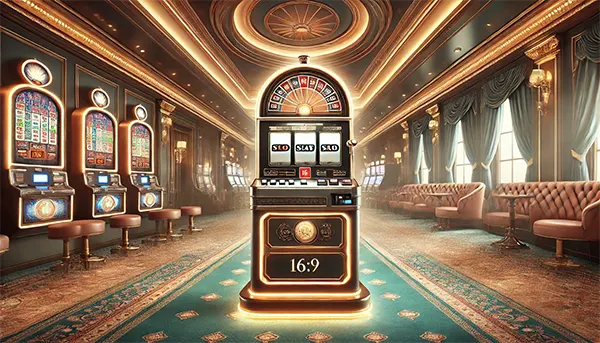
How to Choose Slots for Big Wins Considering RTP and Volatility
Online slot players often wonder how to maximise their chances of winning. Two of the most critical factors to consider when choosing the right slots are RTP (Return to Player) and volatility. This article explores these concepts and how understanding them can help you make informed decisions for potential big wins. By delving into the mechanics of these features, players can align their gaming strategies with their personal preferences and goals.
Understanding RTP: What Does It Mean?
RTP, or Return to Player, is a percentage that indicates how much a slot machine pays back to players over a long period. For example, if a game has an RTP of 96%, it means that, on average, players will receive £96 for every £100 wagered. However, it’s essential to note that this is a theoretical figure and doesn’t guarantee specific results in a single session.
In practical terms, RTP provides insight into the overall profitability of a slot. Casinos often advertise RTP figures to help players gauge their odds. It’s important to remember that RTP applies over hundreds or thousands of spins, so individual outcomes may vary significantly. When selecting a slot, understanding its RTP can guide you towards games that offer better chances of recouping your investment.
Why RTP Matters When Choosing Slots
RTP is a crucial factor for players who are keen on maximising their returns. Slots with higher RTPs, typically above 96%, are considered more player-friendly. These games reduce the house edge and provide better long-term payouts compared to those with lower RTPs. Many online casinos provide this information openly, allowing players to compare and choose the most rewarding options.
Players who enjoy extended gaming sessions will find high RTP slots particularly advantageous. These games often provide a steady stream of small to moderate wins, keeping players engaged for longer. For casual gamers, choosing high RTP slots can also enhance the overall experience by reducing the frequency of losing streaks. However, it’s essential to combine RTP with other factors, such as volatility, to make an informed choice.
Volatility: The Risk Factor in Slot Games
Volatility, also known as variance, describes the level of risk associated with a slot game. High volatility slots offer larger payouts but are less frequent, while low volatility slots provide smaller but more consistent wins. Choosing between high and low volatility depends on your playing style and budget.
Understanding volatility is essential for managing expectations and bankroll. High volatility games are designed for risk-takers who don’t mind long stretches without wins in exchange for the possibility of hitting a big jackpot. In contrast, low volatility slots cater to players who prefer a steadier stream of wins, making them suitable for conservative budgets or beginners. Medium volatility slots strike a balance between the two extremes, offering a mix of small and large payouts.
High vs Low Volatility: Which One to Pick?
High volatility slots, such as “Dead or Alive II,” are ideal for players willing to take bigger risks for the chance of massive rewards. These games often feature bonus rounds, free spins, and high multipliers that can significantly increase winnings. However, they also require patience and a larger bankroll to sustain long losing streaks.
On the other hand, low volatility slots like “Starburst” cater to those who prefer steady, smaller wins. These games are excellent for casual players or those looking to extend their gaming sessions without depleting their budget. Medium volatility slots, such as “Thunderstruck II,” provide a balanced experience, appealing to a wide range of players with varying risk appetites.

Combining RTP and Volatility for Optimal Results
While RTP and volatility are important individually, their combination can provide a comprehensive view of a slot’s potential. For instance, a high RTP with medium volatility offers decent payouts without extreme risk. Similarly, a low RTP with high volatility might suit thrill-seekers aiming for rare but monumental jackpots.
Players should also consider additional features such as bonus rounds, multipliers, and free spins when evaluating slots. These elements can significantly enhance the gameplay experience and contribute to higher payouts. By analysing RTP, volatility, and additional features, players can develop strategies that align with their risk tolerance and winning expectations.
Examples of Popular Slots with Balanced Metrics
Games like “Gonzo’s Quest” (96% RTP, medium volatility) and “Book of Dead” (96.2% RTP, high volatility) are excellent examples of how RTP and volatility work together to create engaging gameplay. Researching these metrics before playing can significantly enhance your gambling experience and improve your chances of success.
It’s also worth experimenting with demo versions of slots to understand their mechanics without financial risk. Many online casinos offer free versions of popular games, allowing players to test different strategies and identify their preferred combinations of RTP and volatility. By doing so, players can optimise their gaming sessions and increase their overall satisfaction.
Understanding and evaluating RTP and volatility are essential steps in selecting the right slots. By considering these metrics, players can align their choices with their risk tolerance and winning expectations, leading to a more strategic and enjoyable gaming experience.
